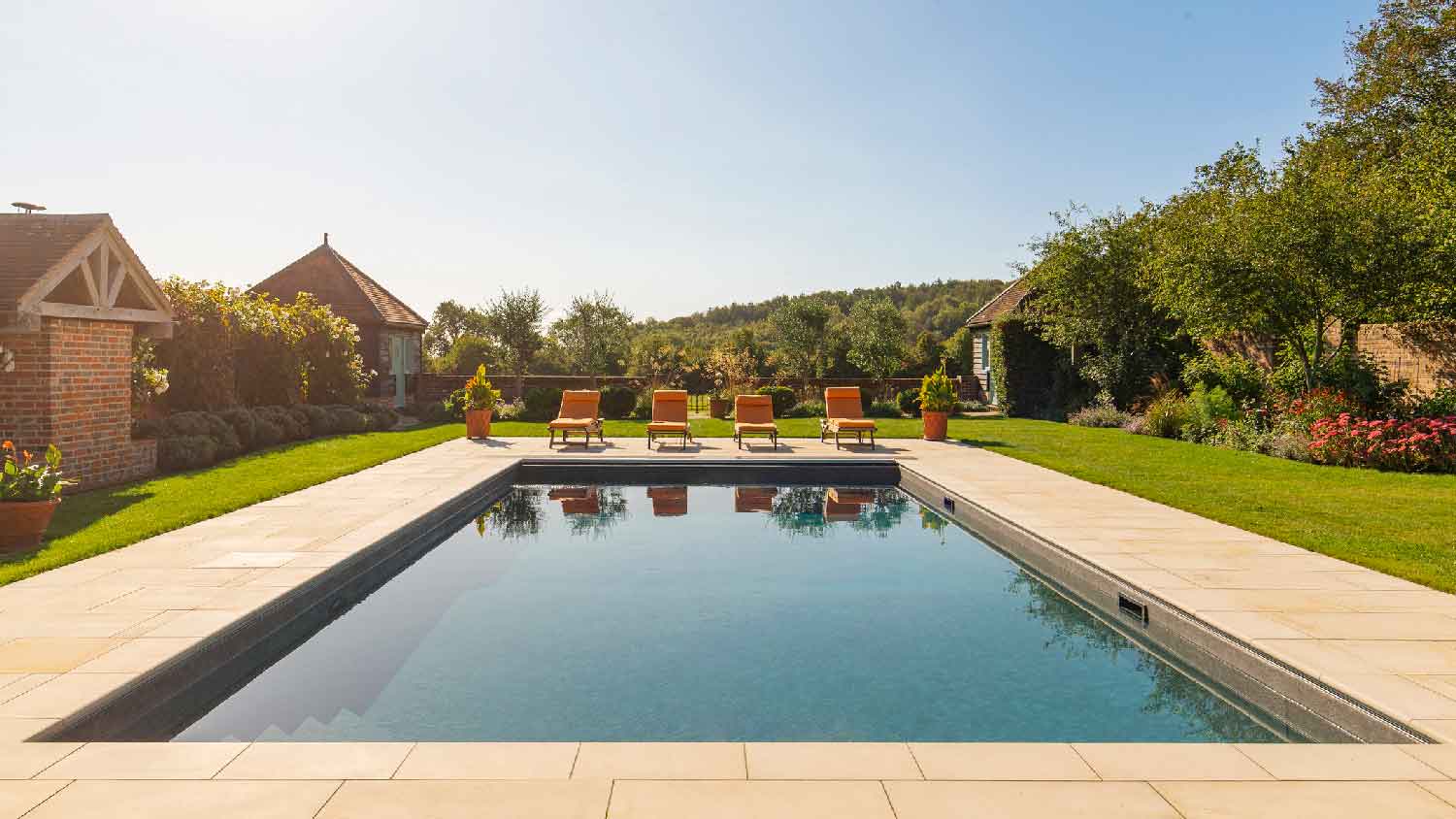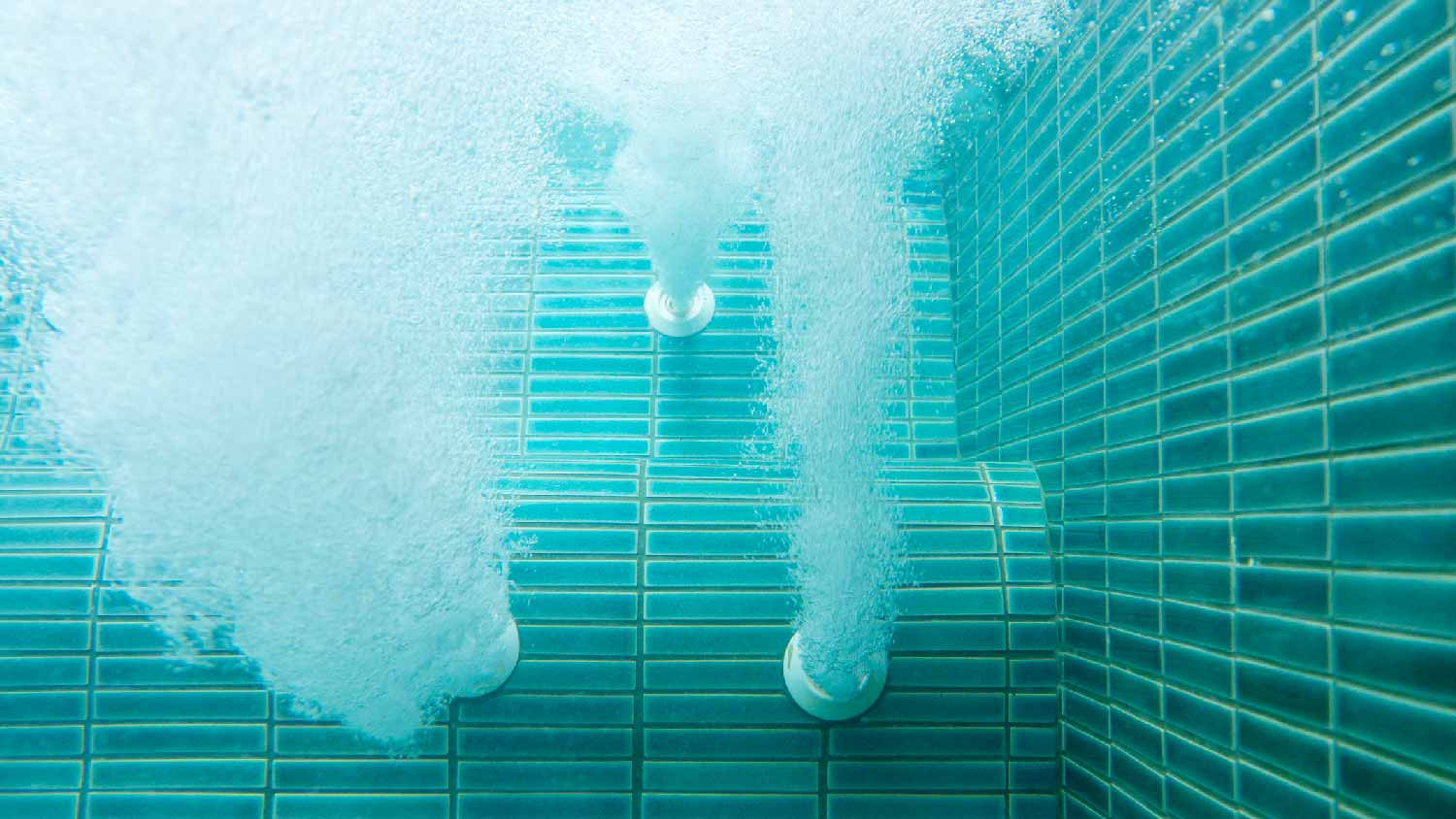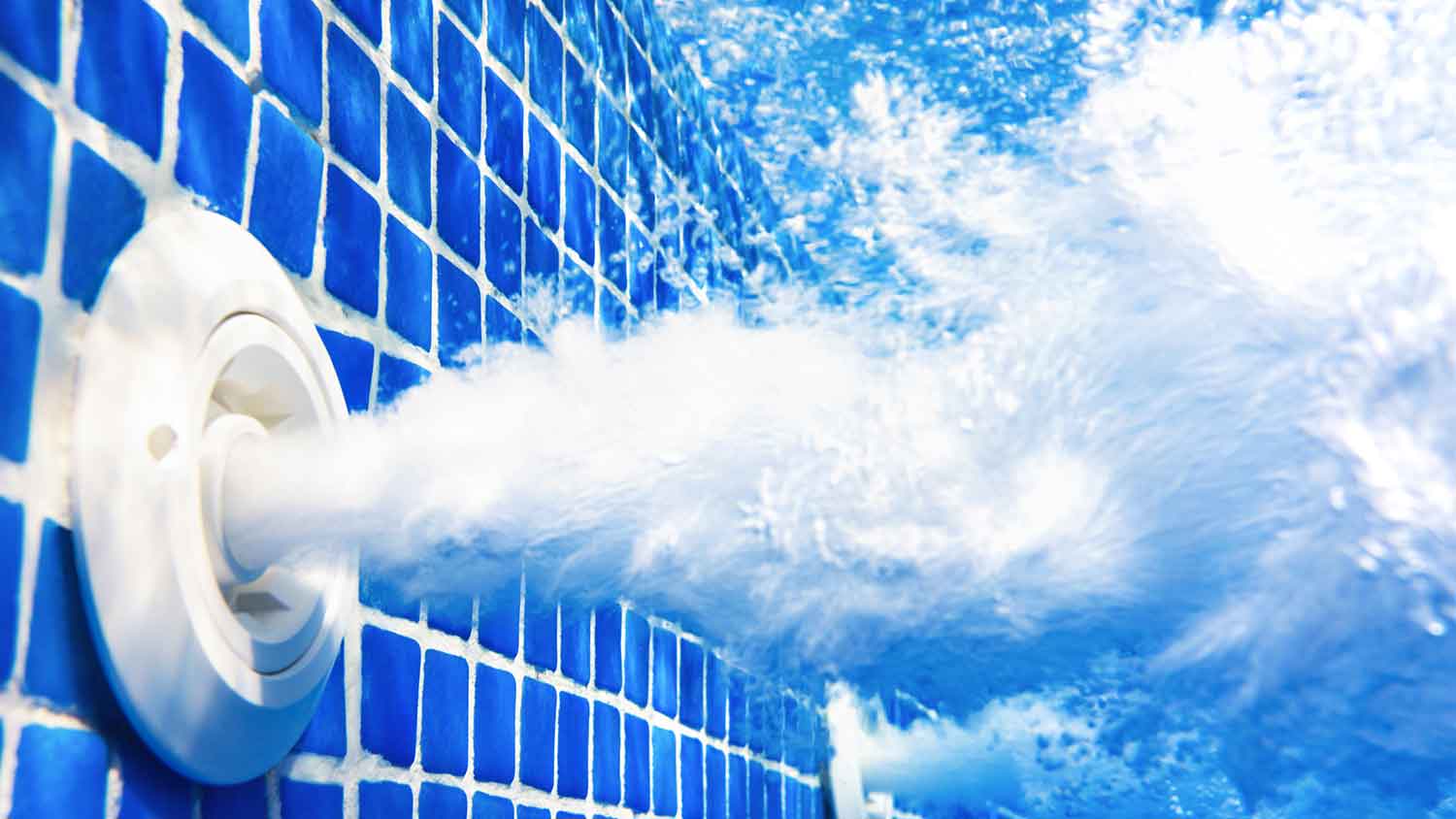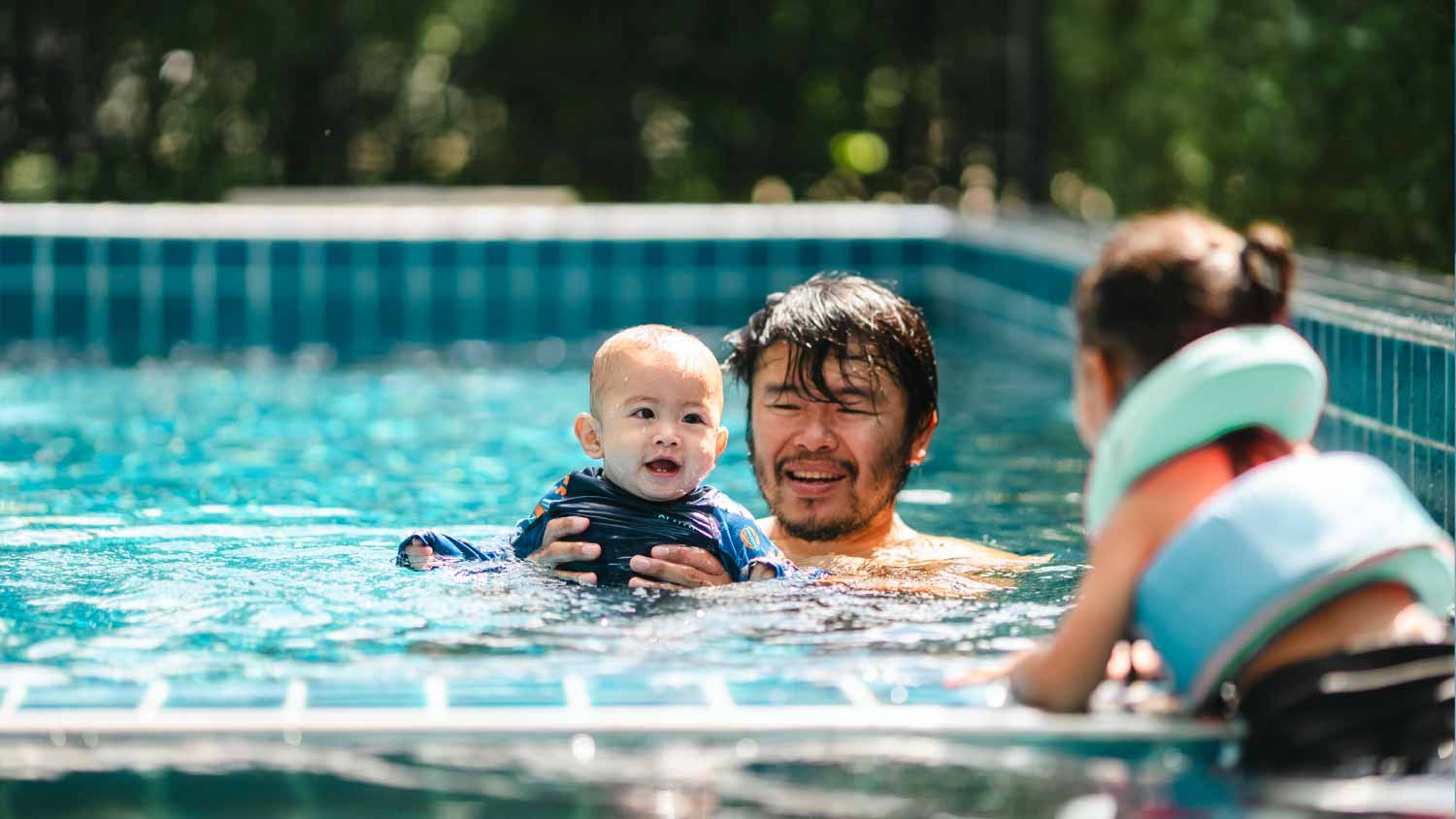Pool Jets Not Working? 5 Common Problems and Solutions
Dive in to learn more


Clogs, leaks, and low water levels can cause malfunctioning pool jets.
Pool leak repairs cost from $10 to $3,500.
You can add water to your pool and clean the jets yourself.
For hard-to-reach clogs, hire a professional.
Those jets in your pool don’t just tickle your sides as you swim laps—they also provide circulation that helps keep algae, dirt, and other contaminants from building up. But if your pool jets aren’t working properly, your pool could quickly go from an oasis to an unbalanced mess. We’ve rounded up some of the most common reasons for pool jets not working and steps you can take to fix the problem ASAP.
1. Plugged Jets
Pools easily accumulate dirt, debris, algae, and biofilm if you don’t stay on top of cleaning your pool. When this happens, the jets can get clogged, preventing water from coming out.
How to Fix It
There are a few ways to clean clogged pool jets. First, make sure you turn off the power. From there, soak the jets in vinegar to break up hard mineral deposits. You can also gently scrub the jets using a brush to help break up the clogs. If this doesn’t work, gently poke a wire into the jets to push out debris. However, this can damage the jets if you’re not careful.
If you need to take apart the jets, work with a trained pool technician who knows how to disassemble the jets and reassemble them correctly.
2. Clogged Impeller

Impellers propel water from your pump to your pool jets. If there’s an obstruction in the impeller, this can impair the circulation process, leading to pool jets not working.
How to Fix It
Because impellers are hard to access and can even be dangerous if you don’t remember to turn the pump off, we recommend working with a pro to fix a clogged impeller or replace a faulty one.
3. Blocked Plumbing
Another type of blockage that occurs outside of the pool jet includes a blockage in your pool’s plumbing. Suction lines, return lines, and intake lines are important parts of your pool’s circulation system. If these lines get clogged, water won’t circulate well from your skimmer to your pump, and you could see the impacts of that via low pressure in your jets.
How to Fix It
Pool line clogs can be hard to access due to the many 90-degree angles and lengthy pipes. After turning off the pool pump circuit breaker, you can try to remove clogs using electrical fish tape, an auger, or a flat sewer rod. At the same time, if you’re not careful, you can make clogs worse. For this reason, you should hire a pro to handle hard-to-reach clogs.
4. Low Water Level
If you notice that your pool jets aren’t working, check your pool’s water level. Low water levels—anything below the halfway point on your skimmer—can cause your pool pump to take in water. This can not only damage the pump but also decrease the amount of water coming out of the jets.
How to Fix It
To fix low water levels in a pool, grab the garden hose and fill the pool until the water level is halfway up the skimmer.
5. Air Leaks

Low water levels aren’t the only reason air can enter the jet’s circulation system. If there’s an air leak, air bubbles may come out of the return jets instead of water.
How to Fix It
Several parts of your pool jet system can experience air leaks, so it’s important to troubleshoot the problem by investigating each of the following areas:
Drain plug: Check to see if the drain plug or drain plug O-ring is snugly connected to the pump.
O-rings: These rubber pieces work to keep the lid sealed on your pool pump. You may need to replace them if they won’t stay in place.
Plumbing fittings: Run a burning match or incense stick around the plumbing to see if the smoke gets sucked into the plumbing to find the leak.
Valves: Replace any worn valves or the O-rings inside the diverter valves.
When to Call a Pro
Finding out why your pool jets are not working can be hard to pinpoint when the issue stems from anywhere within your pool circulation system. While some common causes are easy to resolve DIY-style, like scrubbing the jets or adding more water to your pool, other problems require mechanical knowledge.
If you suspect there’s a clog within the plumbing system or pump, or you’ve tried cleaning the exterior of the pump and increasing the water levels in your pool, you should hire a local pool repair company to handle the job.
How to Prevent Pool Jets from Not Working
Once you’ve resolved the problem with your pool jets, follow pool best practices to avoid having a repeat later down the line. Here are several steps you can take to prevent pool jets from malfunctioning:
Replace your pool filter: Pool filters should be changed every one to five years depending on the condition of your pool, use, and environment. Change the pre-filter every three to six months.
Schedule inspections: A pro has a keen eye for detecting problems before they become serious. By hiring a pool technician to inspect your pool in the spring and fall, you increase your chances of having a pool in good working order.
Clean your pool: Don’t let debris, algae, or biofilm build in your pool. Scrub the pool walls, clean the skimmer basket once or twice a week, and scoop out leaves during the fall.
Maintain your pool pump: If your pump is over eight years old, makes concerning sounds, or needs repairs, it may be time to replace it with a higher-quality pump for better performance.
Frequently Asked Questions
The average cost to repair a swimming pool is around $700, but prices range from $250 to $1,200, depending on the type of repair. Fixing a drain, small air leak, or skimmer tends to fall at the lower end of the price range, while replacing the filter and fixing larger leaks cost the most overall.
No, pool jets should not have air coming out. While it’s a common problem, making it seem like air coming out is the norm, bubbling pool jets are a sign of loose bearings or fittings, or low water levels. You should get to the bottom of your jets releasing air bubbles because it could be a sign that there’s air entering the pump, which can shorten the lifespan of your pump or lead to costly repairs.















